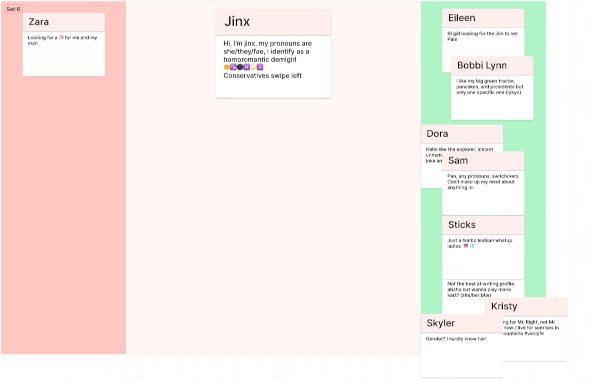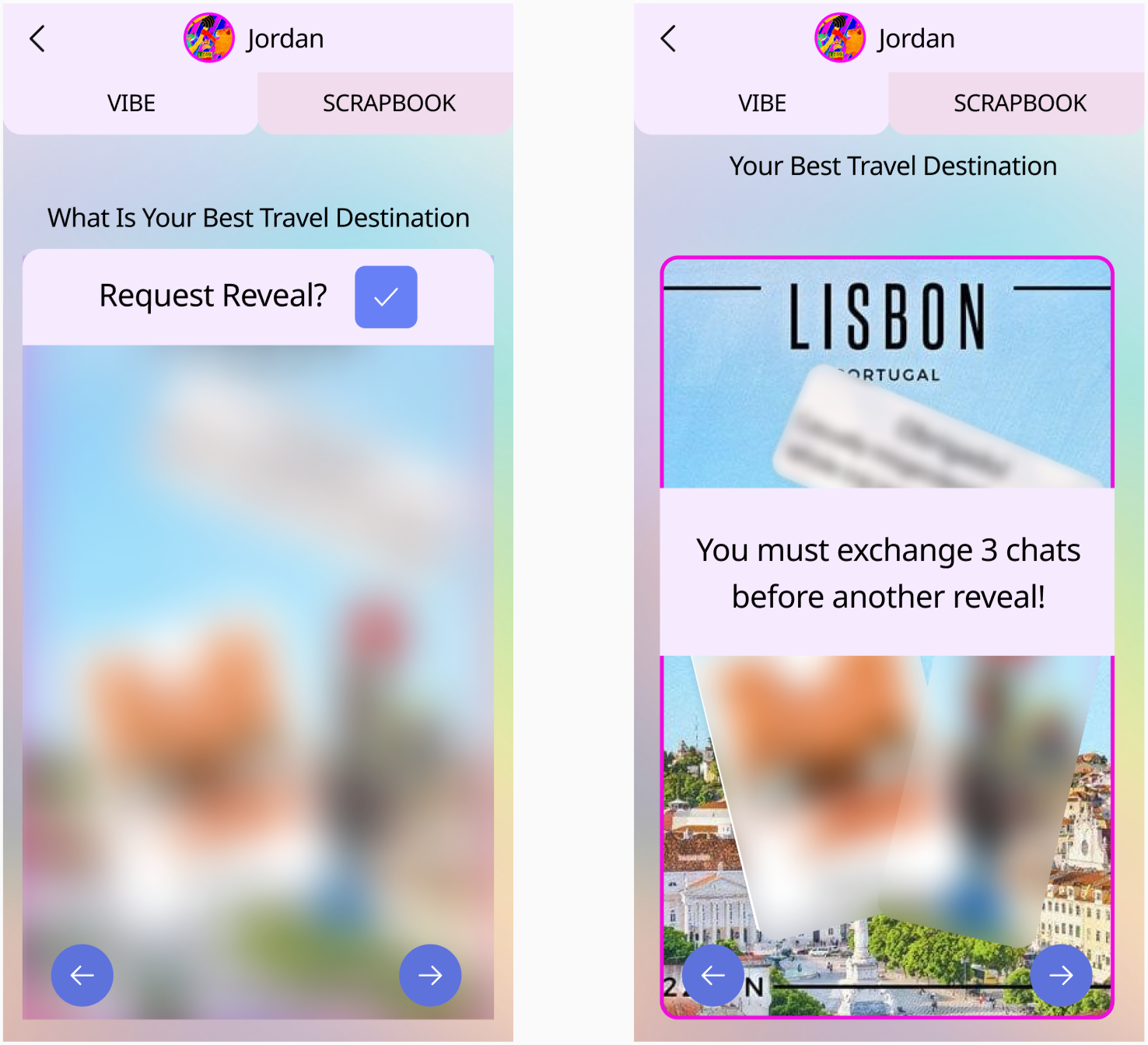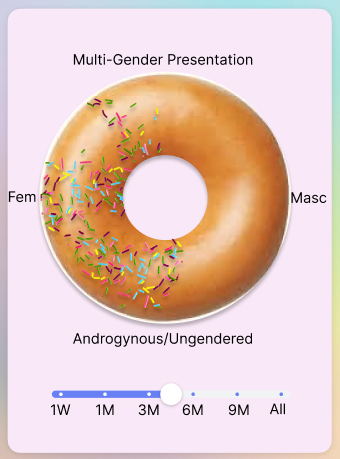Reimagining Queer Dating Apps
Though dating apps offer users access to an abundance of potential partners, these apps often exclude people with LGBTQ identities and perpetuate cisgender, heterosexual norms. Therefore, as part of my dissertation, I undertook the project of reimagining dating apps to be “queerer” and center design values that are often overlooked in normative dating apps. Throughout this project, I with my colleagues collected data to guide ideation, synthesized answers to design challenges into cohesive designs, and prototyped these designs for final feedback.
Data Collection

To better understand the values of users, we collected data in two ways. The first, and less formal, was a series of design activities administered to colleagues over several weekly lab meetings. Focusing specifically on trans and non-binary participants, I conducted a series of user interviews which incorporated card sorting and prototyping activities. From these sources we synthesized design challenges which motivated our ideation.
Mock-Ups
During our initial design meetings, we sought to address challenges and support values identified from our data. We divided dating apps into important constituent feature and functions. For each of these elements, each of the three team members would present one or more ideas for improving these features.
Final Design
Having explored a wide range of feature-level ideas, we proceeded to create formal mock-ups of a singular design which incorporated and built upon the sketches from our ideation.



Future and Ongoing Work: Thinking Queerer
Though the design above shifts the focus of dating apps and reduces reliance on normative gender and sexuality data, in many ways it still resembled the familiar structure of dating apps at its core. Therefore, I chose to continue a step further, and design alternatives that did not start from the perspective of redesigning a dating app, but rather, reimagining dating infrastructures. At the time of this writing, I am currently collecting data in the design workshop phase.
Design Workshops
To facilitate creative, collaborative ideation, trans and non-binary participants were invited to small group workshops where they imagined alternative products, services, or groups to support dating. Participants were guided through blue-sky ideation and pair and share activities.
Mock-Ups
From the ideas discussed in the workshops, we will select particularly creative, unusual, or well-imagined concepts to mock-up with accompanying features.
Feedback
We will present our mock-ups to participants from the workshops to get their feedback on seeing their ideas given form.